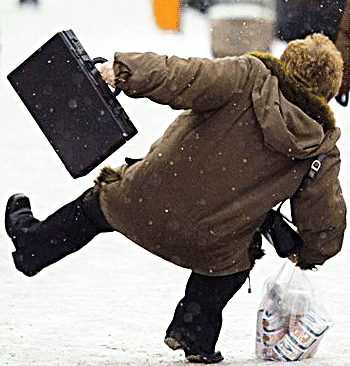Avoid slips and trips
Introduction
Although they might not sound serious, slips and trips account for a third of all major injuries reported in the workplace. Approximate costs to businesses and the economy are more than £500 million a year.
Having staff off sick because of slips and trips could damage your productivity. And if a customer or member of staff injures themselves on your premises, you could be hit by a claim for damages – only part of which is likely to be covered by your insurance.
But the good news is that slips and trips can be easily prevented. By carefully assessing the risks of slips and trips in your workplace you can take common-sense steps to minimise them.
This guide explains how to meet your legal requirement to assess and control the risks of slips and trips and sets out what to do to make your workplace safer.
Assess the risks of slips and trips
You must assess the risks of slips and trips as part of your overall health and safety risk assessment.
It’s necessary not only to protect yourself and your employees, but also to safeguard any customers, suppliers or members of the public who might visit your premises.
You’ll need to consider the risks posed by hazards ranging from spilled substances and trailing cables to rubbish left on pedestrian routes. Consider outside areas of your premises as part of your assessment.
Slips and trips can affect any business. Countering slips should be an integral part of your operations. Following three rules could help you prevent slips and trips occurring in your premises:
-
keep it clean
-
keep it dry
-
keep it clear
Five steps to assessing risks
-
Identify significant hazards – ask staff where slips and trips might happen and how you can reduce risks.
-
Decide who might be harmed, and how – once you know where the risks lie, consider who is most vulnerable. Do you have visitors or employ trainees, for example, who don’t know the workplace or its hazards?
-
Evaluate the risks, eg how likely the risks are to cause a slip or trip, and decide whether existing precautions are adequate.
-
Record your findings – if you employ five or more people, you must write down your findings and inform staff of them.
-
Review your assessment and revise it every so often – especially if new equipment or procedures are introduced.
HSE has developed a free Slips and Trips E-learning Package (STEP), providing guidance through interactive learning. Completing this package will help you understand the causes of slips and trips, the importance of prevention and the actions you will need to take to reduce accidents in your workplace.
Find out about STEP on the HSE website.
Read more: nibusinessinfo.co.uk




